| This
morning we woke to predicted southerly winds,
Force 5 on the Beaufort scale. Our plan for today
therefore is to cover emergency drills as
required for our Sailing School Vessel voyages,
to review our marine biological explorations, and
after lunch to go ashore exploring the intertidal
zone on a beach in Eastern Gloucester Harbor. The
rolling seas yesterday and last night have had an
effect on everyone; folks are feeling the
fatigues of all the little adjustments your body
makes at sea to compensate and maintain balance.
One of our shipmates had hip surgery recently and
is opting, with regret, to forego the rest of the
trip and take care of his healing hip. The
Harbormaster graciously agrees to assist with
transportation, and Trip Leader Alan Hankin
accompanies the student ashore to the train
station. By the time Alan returns, we’ve run
a fire drill and are mustering to begin a Man
Overboard drill.
Once the drills are complete, we take a bit of
time to review what the students have seen and
done so far. We compare the health of Gloucester
Harbor’s waters to that of Boston
Harbor’s, with an overview from MaryHelen
about recent changes in local water quality.
Gloucester’s water treatment plant treats
water to a primary level, but the outfall pipe
here, as in Boston, has been extended far into
Massachusetts Bay for greater diffusion of
effluents. This, in addition to extensions and
enhancements to the city’s sewer system, has
greatly improved harbor and estuarine water
quality around Cape Ann in recent decades. We
consider this in relation to the species we saw
in our otter trawl net yesterday, and collect
additional samples of plankton and other water
data today.
The morning has flown by and, right after
Laurie’s delicious lunch, Fred and Jay take
the small boat and pull our scallop dredge across
the Harbor bottom. The first dredge brings up a
whole load of nothing, as does the second.
Students and crew alike speculate as to possible
reasons why the bottom here could be so clean.
Quickly, then, we’re getting students and
gear prepared for our excursion ashore. Taximan
Fred runs 6 shuttle runs to the nearby beach
[accessed by special permission from local
friends], which takes an hour. Students on shore
begin exploring the intertidal zone with Alan,
and students onboard help arrange science gear
for further sampling.
Our beach visit is a great experience! We drag
the seine net along near the beach, and catch
silversides and a small menhaden. People are
finding green crabs, rock crabs, the Asian Crabs
Alan’s been hoping to find for study in his
classroom aquaria, sea lettuce, some mysterious
orange eggs clustered amidst bladder rack on a
low-tide-exposed boulder near shore. Encrusting
Bryozoans, various small shrimp, blue mussel
shells, slipper shells, and more. MaryHelen takes
a cohort over toward the sea wall, and pawing
through the rack we find dog whelks, periwinkle
snails, living barnacles, and small yellowish
snails camoflaugued amidst the bladder rack. We
have a chance to marvel some more at the
regenerative Sea Star. One student finds a number
of mysterious small holes in the sand, each
encased in a short sandy stack, and together we
wonder if they’re made by worms, or clams,
or something else entirely. An interesting puzzle
for further investigation. Perhaps that student
will identify and research the life cycle of the
unknown sand-stacking critters beneath the sand.
It’s too soon, but we have to go back to
the boat. Alan braves the waves once again to
help Fred keep the small boat off the shore, and
the shuttle runs being again. Only 2 toes are
sliced by our sharp-shelled beach hosts; we
quickly dress each in iodine solution and a clean
bandaid. (As much for fun as necessity, one
student is carried in a two-man ‘rescue
seat’ hold out to the small boat!).
We can smell dinner in the making as the last
shuttleboat returns to our home schooner.
MaryHelen gathers the student company for a brief
brainstorming session about their class projects:
each has to design a research project he/she can
complete this semester, investigating some
question they have about the marine environment
along the Massachusetts coastline. Right now,
despite encouragement to focus and be specific,
their questions are very broad, encompassing
global warming and other earth-wide puzzles. We
can imagine these film majors will be tackling
MAJOR questions in their feature films and
documentaries in years to come!
After dinner, while galley cleanup is tackled
below, a few climb into bunks early, while most
of us gather round the galley scuttle to play
guitars and sing. We swap songs, from old sea
chanteys to familiar contemporary folk-pop songs,
for over an hour. The stars just keep getting
brighter overhead, and that cooling (now steady
northwesterly) breeze is not quite strong enough
to blow us into our warm bunks—not 'til
around 2100, anyway. At that point, the thought
of an 0400 wakeup for A-watch is enough to pull
us down below for some much-welcome sleep.
Anchor watch, dotted with stars, is also
graced by a glowing green minnow-trap dangled
over the rail--full of ctenophores,
dinoflagellates, and other bioluminescing marine
organisms.
It’s been a great day, tucked in this
corner of the sea.
Captain: Sophie Morse
Program Coordinator: MaryHelen Gunn
|
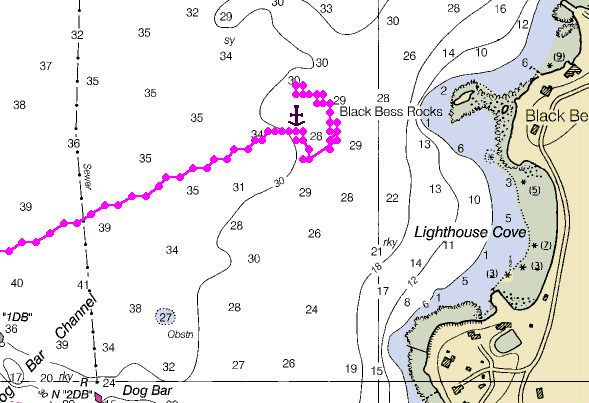 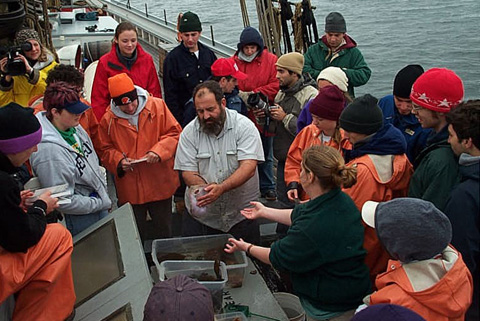
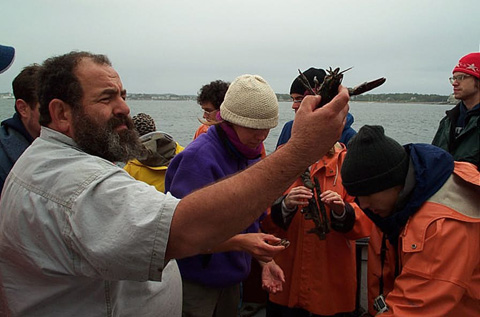
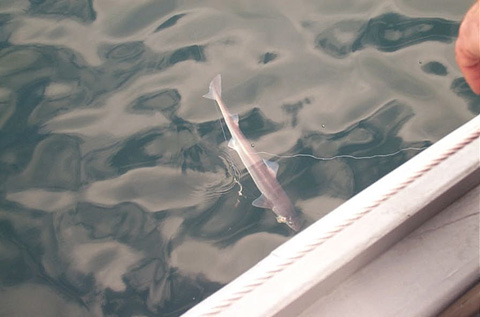
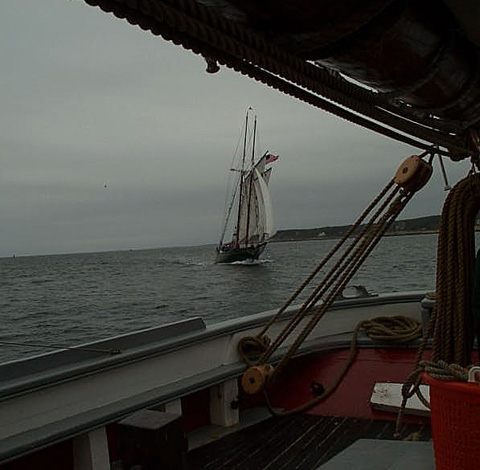
|













